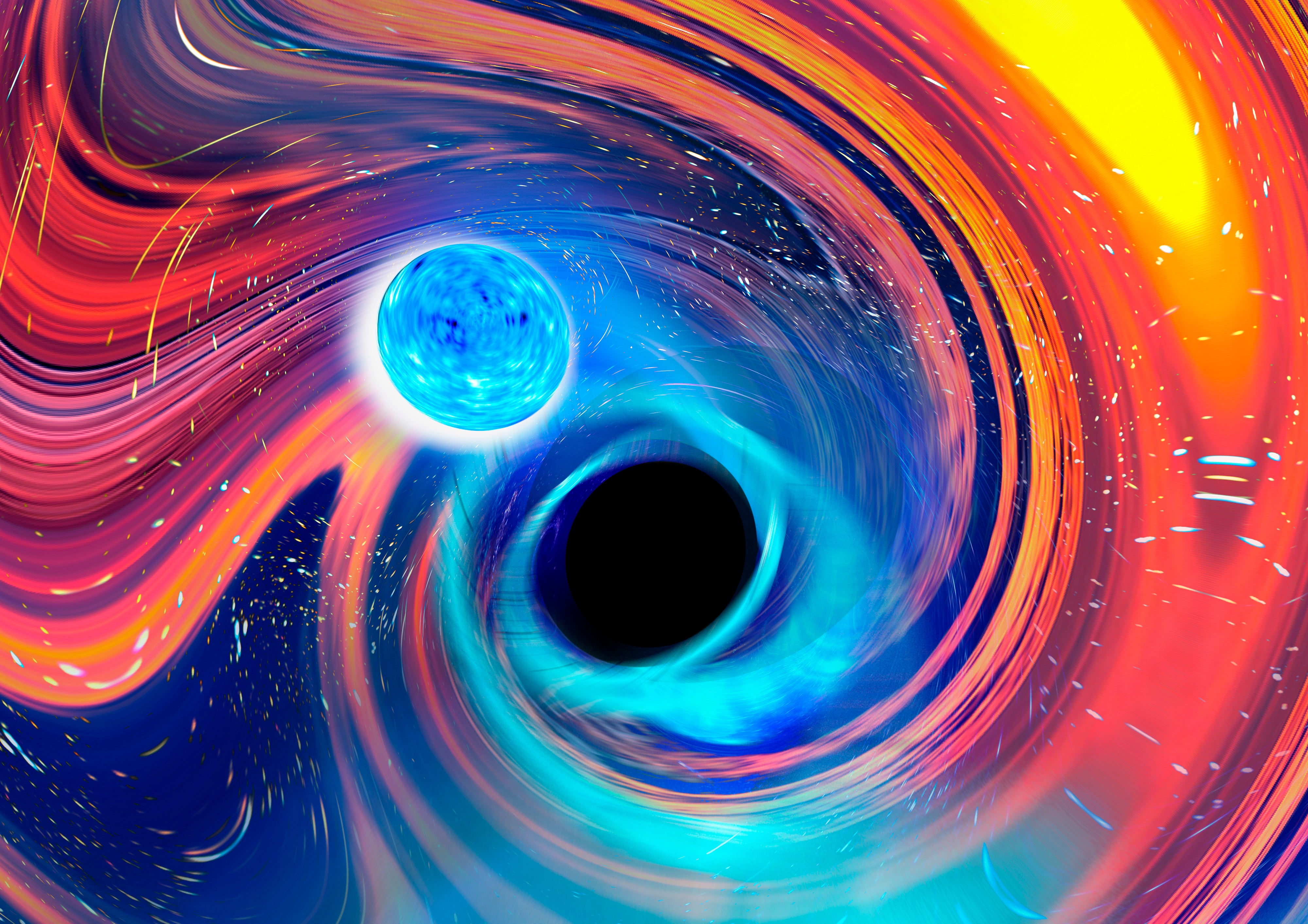Cosmic gulp: Astronomers see black hole swallow neutron star
Astronomers say they've witnessed for the first time a black hole swallowing a neutron star, the densest object in the universe

Your support helps us to tell the story
From reproductive rights to climate change to Big Tech, The Independent is on the ground when the story is developing. Whether it's investigating the financials of Elon Musk's pro-Trump PAC or producing our latest documentary, 'The A Word', which shines a light on the American women fighting for reproductive rights, we know how important it is to parse out the facts from the messaging.
At such a critical moment in US history, we need reporters on the ground. Your donation allows us to keep sending journalists to speak to both sides of the story.
The Independent is trusted by Americans across the entire political spectrum. And unlike many other quality news outlets, we choose not to lock Americans out of our reporting and analysis with paywalls. We believe quality journalism should be available to everyone, paid for by those who can afford it.
Your support makes all the difference.Talk about a heavy snack. For the first time, astronomers have witnessed a black hole swallowing a neutron star, the most dense object in the universe — all in a split-second gulp.
Ten days later they saw the same thing, on the other side of the universe. In both cases, a neutron star — a teaspoon of which would weigh a billion tons — orbits ever closer to that ultimate point of no return, a black hole, until they finally crash together and the neutron star is gone in a gobble.
Astronomers witnessed the last 500 orbits before the neutron stars were swallowed, a process that took far less than a minute and briefly generated as much energy as all the visible light in the observable universe.
“It was just a big quick (gulp), gone,” said study co-author Patrick Brady, an astrophysicist at the University of Wisconsin Milwaukee. The black hole “gets a nice dinner of a neutron star and makes itself just a little bit more massive.”
The bursts of energy from the collisions were discovered when detectors on Earth spotted the mergers' gravitational waves, cosmic energetic ripples soaring through space and time as first theorized by Albert Einstein They each came from more than one billion light-years away. The waves were detected in January of 2020, but the study analyzing and interpreting the data by more than 100 scientists was published Tuesday in Astrophysical Journal Letters.
While astronomers had seen gravitational waves from two black holes colliding with each other and two neutron stars colliding with each other, this is the first time they saw one of each crashing together.
Neutron stars are corpses of massive stars, what's leftover after a big star dies in a supernova explosion. They are so dense that they have about 1.5 to two times the mass of our sun, but condensed to about 6 miles (10 kilometers) wide, Brady said. Some black holes, known as stellar black holes, are created when an even bigger star collapses into itself creating something with such powerful gravity that not even light can escape.
Scientists think there should be many of these neutron star and black hole pairings, but they’ve yet to find one in our own galaxy.
“This is very cool,” said Johns Hopkins University astrophysicist Marc Kamionkowski, who wasn’t part of the research. He said this will help astronomers predict how abundant these pairings are.
__
Follow Seth Borenstein on Twitter at @borenbears.
___
The Associated Press Health and Science Department receives support from the Howard Hughes Medical Institute’s Department of Science Education. The AP is solely responsible for all content.